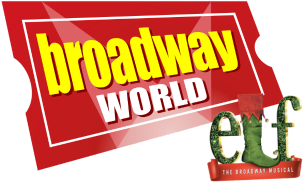Review: WUTHERING HEIGHTS Dances Madly to the End of Love
In the epigraph to his new ballet, choreographer Sasha Janes spread out one of Emily Brontë's most lurid quotes over a full page in the program booklet for Charlotte Ballet's production of Wuthering Heights. Contemplating her love for the elegant Edgar Linton and the mysterious Heathcliff, Catherine Linton likens her love for Edgar to the leaves of a forest, decorous and mutable, while her love for Heathcliff resembles the rocks below - short on delight, but necessary and eternal.
"I am Heathcliff!" Catherine famously tells Nelly Dean, the narrator of the novel.
Janes was not merely going to tell the story of Wuthering Heights, he was signaling that he would be trying to replicate its towering emotions, manias, and passions.
Incredibly, he largely succeeds.
It helps, of course, that the technical team behind him get the atmospherics right, most notably the lighting and projection designs by Christopher Ash and the costumes by Jennifer Janes. The Janeses are obviously on the same page conceptually, for the costumes designed for Catherine and Heathcliff are folksy and flowing, while the Lintons and Earnshaws tend toward genteel formality, starchiness, and pastels. Choreography magnifies those contrasts, controlled and elegant at Catherine's wedding to Edgar, wild and athletic in her youthful frolics with Heathcliff.
As the plot thickens and the protagonists mature, the pas de deuxs between Catherine and Heathcliff become darker and more sensual - and the costumes more diaphanous and scanty. Even uncannier than his choreography, the rightness of Janes's musical choices assures that you can hardly tear your attention away from the dancers until the overwhelming final scene.
With his dark curly hair and his robust, muscular torso, Josh Hall (alternating with Ben Ingel) was the perfect blend of savagery and beauty as Heathcliff on opening night. After the intermission interval, Hall carried off Heathcliff's astounding transformation from unrefined rusticity to steely, seething gentility marvelously well, and his partnering in the unique final pas de deux was both powerful and heartbreaking.
Working opposite the power and virility of Hall, Chelsea Dumas very likely convinced a hefty chunk of the opening night crowd that Catherine was the role in Wuthering Heights. Hers were the moves that gave the pas de deuxs with Heathcliff their wildness. Hers were the anguish and madness when the transformEd Heathcliff married her sister-in-law Isabella, avenging himself for her betrayal of their love. Through it all, she stands up for Heathcliff against her abusive brother Hindley and her jealous husband Edgar.
Both Janes and Dumas seemed to grasp that Brontë thought of Catherine as a woman whose fierce spirit and vitality were too much for her frail frame - particularly when pregnancy and parturition were added to her stresses. In the novel, Catherine's death is a halfway mark, where our attentions begin to shift to a new generation after a raging, grieving Heathcliff curses his beloved and calls upon her spirit to haunt him the rest of his days.
Following the lead of the 1939 film, starring Laurence Olivier and Merle Oberon, Janes makes Catherine's death his denouement. Yet cursing and conjuring aren't things that ballet does well. So Janes elaborates brilliantly on Heathcliff's graveside vigil: here Hall clawed at the still fresh mound of dirt over Catherine's body and actually pulled Dumas out of her grave. Then he danced a pas de deux with Dumas' lifeless body, lifting and carrying her all over the stage, pouring out his love, his rage, and his grief.
Dumas remained inert as the music and the passion swelled, coming back to life for just a few precious moments, her second death intensifying Hall's anguish and devastation. Tears flowed freely throughout Knight Theater.
Action before intermission, though clearly distinguishing the protagonists from the others, wasn't always as brilliant. Janes tells the story well in theatrical vignettes, but there needed to be more real dancing from the supporting players. There could be more ensemble work when Catherine and Heathcliff first spy on the Lintons. By the time we do reach the outbreak of dance at the Catherine-Edgar wedding, it feels overdue and overlong.
Drew Grant as foster brother Hindley and James Kopecky as Edgar had unique dancing spots, Grant in a high-stakes card game with Heathcliff and Kopecky vying with Heathcliff for Catherine's affections. Other supporting players - most notably Mark Diamond as Heathcliff's foster father and Sarah Hayes Harkins as his wife Isabella - further demonstrated the depth of the Charlotte Ballet company with their exemplary dramatic work.
Though a final tribute to Jean-Pierre Bonnefoux has been hurriedly arranged for next month, Wuthering Heights was to be the last program in Bonnefoux's 21-year tenure as Charlotte Ballet's artistic director. Fittingly enough, the last ballet commissioned for the company under Bonnefoux's leadership was paired with the first new work commissioned during Bonnefoux's years, Alonzo King's MAP, premiered when the company was still known as North Carolina Dance Theatre.
Bridging 1996-2017, the two works were a handsome frame for an impressive artistic director, president, and choreographer. Bonnefoux strengthened a company that was already excellent and made it more prominent in the city's life. With its powerhouse educational and apprentice programs, Charlotte Ballet now plays a more important role in the city's future. My turn to lead the cheers, Jean-Pierre. Bravo!
Comments
Videos
